 User Guide |
|||||||
|
|||||||
|
Change Type
|
Description
|
Version Number
|
|
System Change
|
Database Get control is included in the legacy control pack, rather than being issued on new installations. This control can still be used by existing users, but will no longer be included in the training material. Please use the curent Data Controls instead.
|
4.5.34
|
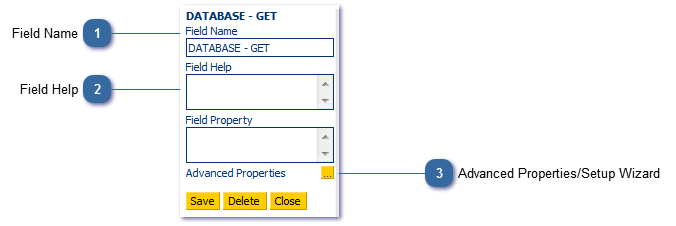
Step 1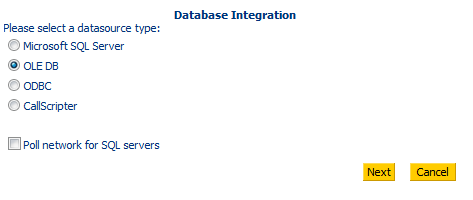 Choose the data source type to link to. The example that follows shows an Excel spreadsheet being used, the following steps will vary slightly depending on the data source type selected. In most instances it is best to use the CallScripter database (this will allow users to update information by using a Database Get if necessary, and will not give any performance issues if many agents are accessing the data).
Step 2Create the link to the data source:
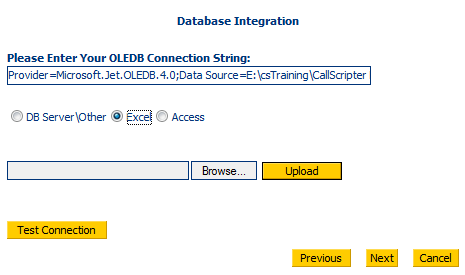 Choose the data source type to link to. In the example that follows, an Excel Spreadsheet connecting using OLEDB is used. Ideally the SQL table should be queried directly as many agents accessing the same spreadsheet can cause performance issues. The following steps will vary slightly depending on the data source type selected.
Step 3 Change the text identifier if required. Ordinarily this can be left as it is.
Step 4Enter the query to return the data as required:
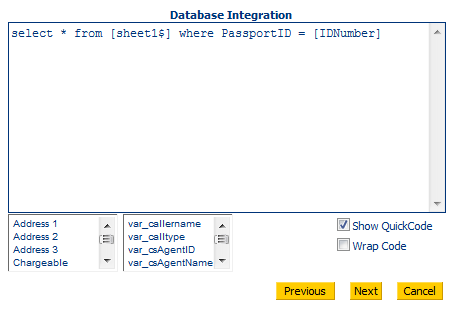 Note that all fields and variables used in the script can be included in the select statement. This control can also be used to insert or update data in a table, see Populating the DNC table for an example.
Step 5Enter a test value that exists in the data source.
 Step 6Map the script fields (appearing in the drop down lists) to the data fields (appearing as bold headings above the drop down box). Variables and fields can be mapped.
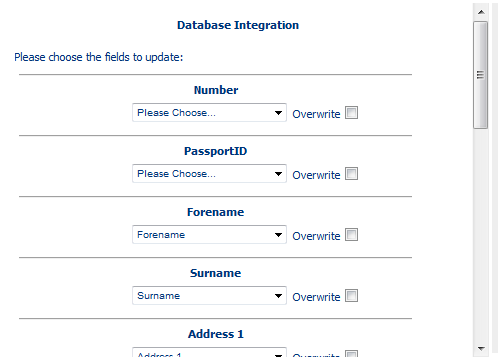 Overwrite: Check this option to allow the agent to go back and pick a different record from a second search.
Click Finish at the bottom of the mapping window to complete the configuration of the Database Get control.
| ||||||||